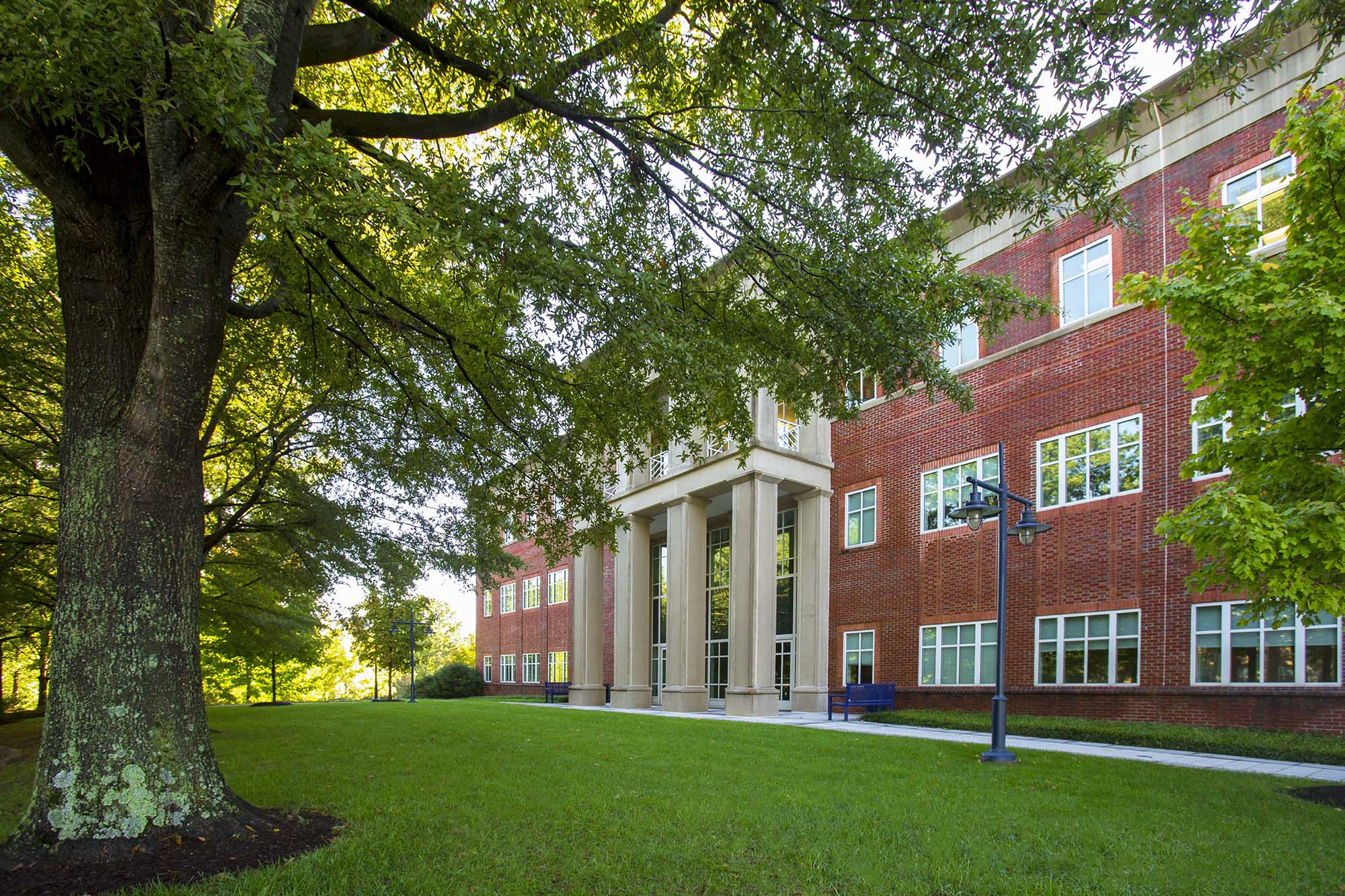The Ivy Foundation selected 14 promising biomedical research projects from the University of Virginia this week for funding from its COVID-19 Translational Research Fund, under the administration and guidance of the UVA Office of the Vice President for Research.
The projects include development of biosensors, artificial intelligence for testing, vaccine development, novel treatment options and better data analytics to predict the spread of the virus.
“We felt it was important to use our resources to help our community, and to leverage the breadth of the University of Virginia’s research to make an impact with COVID-19,” Dr. Bobby Battle, who chairs the Ivy Foundation, said. “We’re really impressed with the range and quality of the projects funded.
“We would like to thank the review committee, consisting of diverse experts on broad range of topics, including one of the world’s leading experts on SARS virus, for contributing their time and expertise to direct us toward projects that may change the COVID-19 landscape.”
The Charlottesville-based Ivy Foundation committed $2 million in May to help accelerate biomedical research on COVID-19 at UVA and to support research that addresses the diagnosis, treatment options, vaccine development and health care worker protection needs for COVID-19.
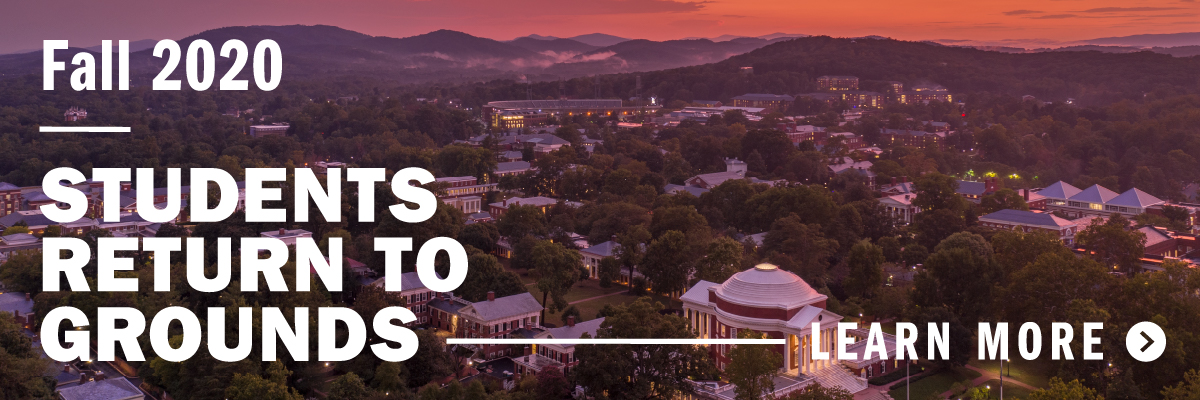
The foundation has a long history of supporting biomedical research at UVA, endowing professorships in pediatrics and funding fellowships for science researchers, as well as giving $45 million in 2005 to help build and renovate the Emily Couric Clinical Cancer Center, the Battle Building at the UVA Children’s Hospital and the Ivy Translational Research Building.
“Researchers at UVA have been moving quickly, approaching the SARS-CoV-2 pandemic from different angles and taking advantage of our collaborative culture to both mitigate the health effects and to try to stop the virus from spreading,” Melur “Ram” Ramasubramian, vice president for research, said. “This important gift will help develop these ideas into vaccines, cures and prevention, and to pursue further private funding to get these ideas to market. This will also help our researchers pursue federal funding for addressing foundational questions and hypotheses regarding the virus that may arise.”
“The passion and dedication of the faculty and staff tackling this global pandemic is truly inspiring,” UVA Provost Liz Magill said. “We’re grateful to the generosity of the Ivy Foundation for making this vitally important research possible.”
Projects receiving funding:
Microparticle-Based Scaffold for Recovery from COVID-19-Associated Intubation Scarring
Donald Griffin, School of Engineering, Biomedical Engineering
James Daniero, School of Medicine, Otolaryngology-Head and Neck Surgery
Patrick Cottler, School of Medicine, Plastic Surgery
An unfortunate side effect of ICU treatment of COVID-19 patients has been a dramatic increase in long-term intubation. Intubation of greater than 10 days results in a high likelihood of pressure-associated ulcers and production of a poorly healing aerodigestive mucosal defect, requiring surgery with risks of reoccurrence and potentially fatal complications. The goal of this project is to design and validate a biomaterial device that will simultaneously accelerate aerodigestive mucosal healing and prevent scar recurrence following surgical excision of fibrotic blockages.
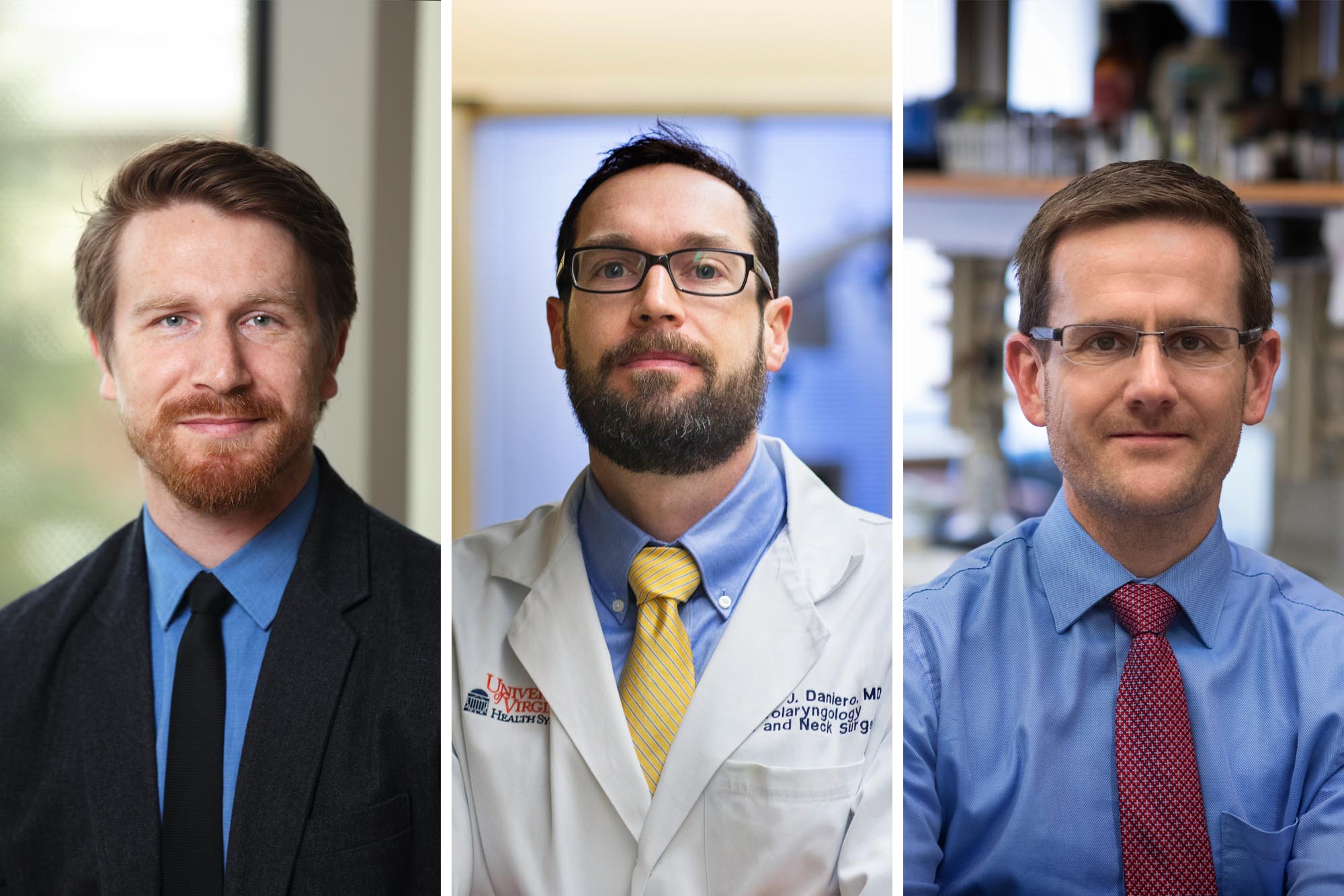
From left, Donald Griffin, James Daniero and Patrick Cottler. (Griffin photo by Tom Cogill; Danieo and Cottler by Dan Addison, University Communications)
Analysis of Respiratory Kinematics (ARK): Novel Wearable Technology for Remote Detection of Labored Breathing in COVID-19 Patients
Shrirang M. Gadrey, School of Medicine, Geriatrics and Palliative Care
Ronald D. Williams, School of Engineering, Electrical and Computer Engineering
J. Randall Moorman, School of Medicine, Physiology and Biomedical Engineering
Sarah J. Ratcliffe, School of Medicine, Public Health Sciences, Biostatistics
Labored breathing is a strong predictor of respiratory failure. A method to monitor labored breathing without a bedside evaluation is urgently needed, especially for COVID-19 patients.
The ARK system uses unobtrusive wearable sensors to detect and quantify labored breathing. The team plans to test this technology with emergency room patients with COVID-19 and determine the respiratory kinematic signatures of COVID-19.
Rapid Generation and Optimization of Mouse Models That Can Be Used for Emerging Infections
Kumari Andarawewa, School of Medicine; Associate Director Center for Comparative Medicine, Radiation Oncology
Sanford Feldman, Director, Center for Comparative Medicine
Patrick Dillon, School of Medicine, Hematology/Oncology
Mark Conaway, School of Medicine, Translational Research and Applied Statistics
The rapid development of rodent models represents a critical barrier to public health preparedness against emerging virus infections, including the testing of antivirus therapy and vaccines. There is an urgent need to develop useful experimental mouse models to study SARS-CoV-2 as well as any other viral infections in the future. The team plans to optimize the expression of hACE2 and also to generate hACE2 germ-free model systems of COVID-19.
AI-assisted SARS-CoV-2 Virus Detection Based on Label-free Electrical Biosensor
Kyusang Lee, School of Engineering, Electrical and Computer Engineering, Materials Science and Engineering
William Petri, School of Medicine, Infectious Diseases and International Health
Since specific drugs or vaccines for COVID-19 are not available yet, early detection is crucial for stopping the pandemic. The team plans to develop an artificial-intelligence-enabled accurate and rapid SARS-CoV-2 virus detection system using a thin film transistor-based, label-free biosensor array.
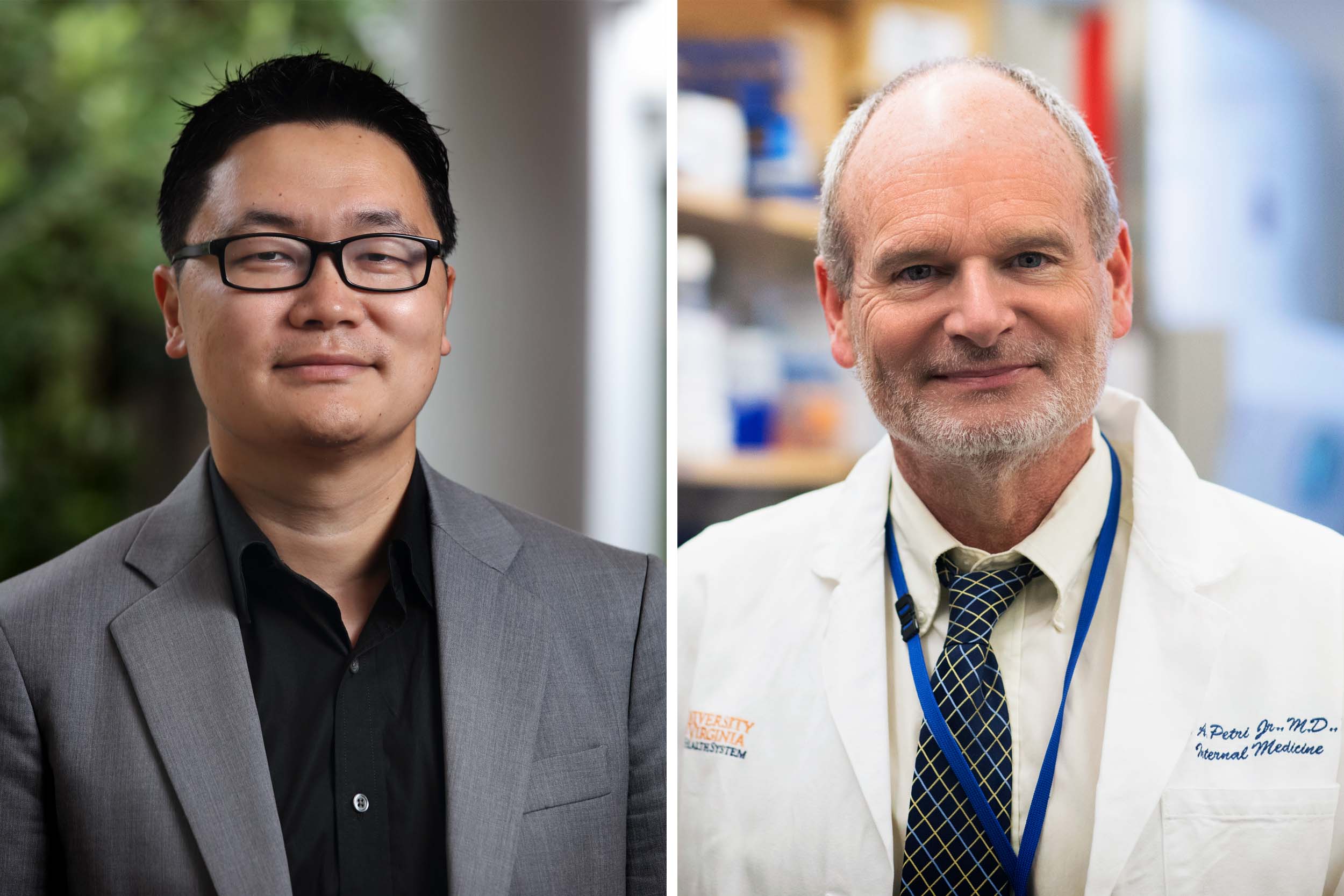
Kyusang Lee, left, and William Petri. (Lee photo by Tom Cogill; Petri by Dan Addison, University Communications)
Development of Anti-CD3 x Anti-COVID-19 Bispecific Antibody Targeted T Cells for Treatment of SARS-CoV-2 Infection
Lawrence G. Lum, School of Medicine; Director of Cellular Therapy; Scientific Director, Bone Marrow Transplant, Hematology and Oncology
Jeffrey M. Sturek, School of Medicine, Pulmonary and Critical Care
Archana Thakur, School of Medicine;, Scientific Director, Center for Human Therapeutics Care
Peter Kasson, School of Medicine, Molecular Physiology and Biological Physics; School of Engineering, Biomedical Engineering
This project aims to develop an immunotherapy approach by developing an anti-CD3 activated T-cells armed with a bispecific antibody against SARS-CoV-2 virus that can target infected cells and kill them. The method can be adapted to develop off-the-shelf therapeutics produced ex vivo to treat patients. This is a high-risk, high-impact approach to develop a new therapeutic to eliminate virally infected cells and viral load to decrease the severity of infection and mortality associated with SARS-CoV-2 infection.
Technology-Driven Entrepreneurial Solutions to Address Healthcare Worker Protection Needs
Michael D. Williams, School of Medicine, General Surgery
Gaurav Giri, School of Engineering, Chemical Engineering
Bala Mulloth, Frank Batten School of Leadership and Public Policy
To address the looming personal protective equipment shortage, this project will perfect a “metal organic framework” as a new synthesizable coating for fabrics, to rapidly create personal protective equipment for health care workers and individuals with the potential for a greater than 10-fold increases in the filtration capacity of cotton, with minimal impact on breathability. It is anticipated that these materials will have a substantial lifetime, will be washable and reusable, and manufactured at a cost significantly below the current competitive and gold-standard N95 masks.
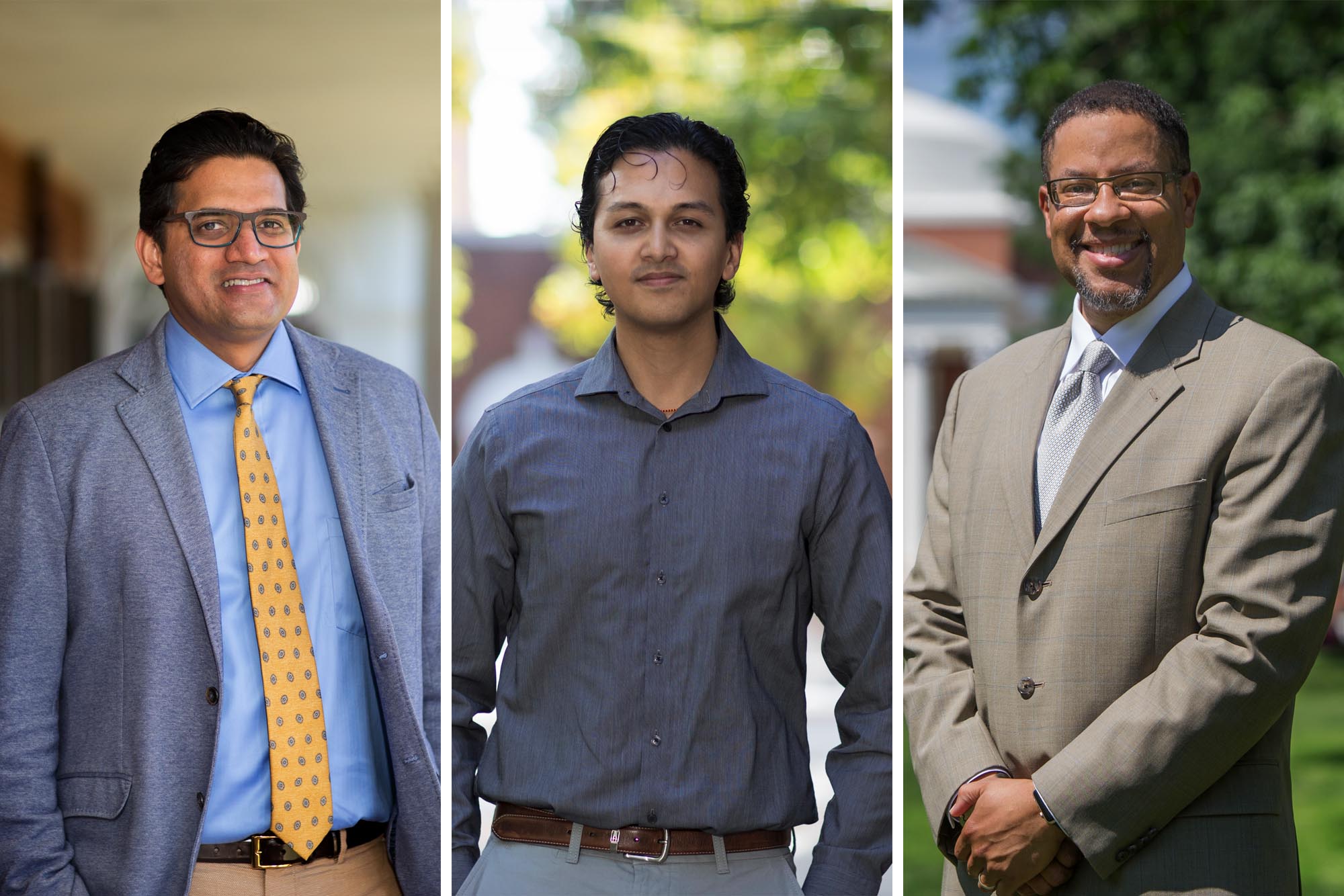
From left, Bala Mulloth, Gaurav Giri and Michael D. Williams. (Mulloth and Giri photos by Dan Addison, University Communications; Williams by Sanjay Suchak, University Communications)
Mucosal Subunit Vaccine for SARS-CoV2
William Petri, School of Medicine, Infectious Diseases and International Health
Peter Kasson, School of Medicine, Molecular Physiology and Biological Physics; School of Engineering, Biomedical Engineering
The aim of this project is to develop a mucosal S glycoprotein vaccine that is envisioned to be deliver intra-nasally. Vaccine efficacy will be measured by micro-neutralization using mucosal IgA and plasma IgG, including the ability of immune sera to block receptor binding, viral membrane fusion and cross-protect against SARS-CoV-1. Protection in mice expressing the human ACE2 receptor will also be tested.
IL-13 as a Predictor and Contributor to Hypoxic Respiratory Failure in COVID-19
William Petri, School of Medicine, Infectious Diseases and International Health
Barbara J. Mann, School of Medicine, Infectious Diseases
Jason Papin, School of Engineering, Biomedical Engineering; School of Medicine, Infectious Diseases and International Health, Biochemistry and Molecular Genetics
The team has discovered that the IL-13, a cytokine, helps predict whether a COVID-19 patient will need intubation and ventilation. They plan to study the plasma samples collected daily from UVA COVID-19 patients, develop a mouse model of SARS-CoV-2 pneumonia, and target the IL-13 pathway to describe immune and metabolomic features underpinning the ability of IL-13 levels to predict the future need for mechanical ventilation.
Association of Anti-phospholipid Antibodies With Thromboembolism in COVID-19
Dana P. Albon, School of Medicine, Pulmonary and Critical Care
Lindsay Somerville, School of Medicine; Associate Director, Adult Cystic Fibrosis Medicine
Heather M. Bruschwein, School of Medicine, Psychiatry & Neurobehavioral Sciences
This team will study whether COVID-19 infection causes an elevation of antiphospholipid antibodies and consequently causes thrombosis. They will study COVID-19 patient samples for elevated antibody levels to generate their preliminary data, which could lead to changes in patient care and an identification of which patients could benefit from anticoagulation therapies.
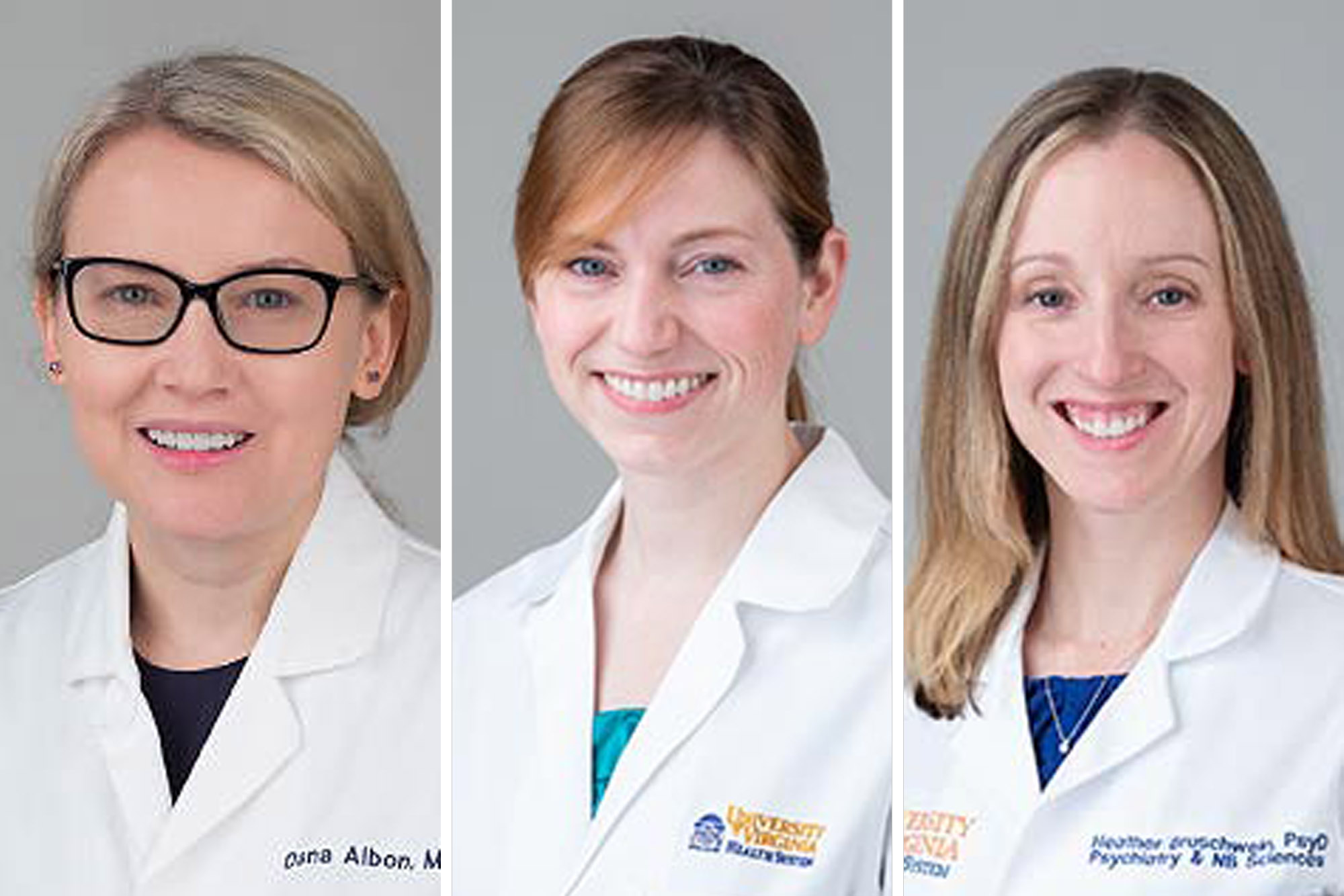
From left, Dana Albon, Lindsay Somerville and Heather Bruschwein. (Contributed photos)
Clinical Trial of Multi-Peptide Vaccine for SARS-CoV-2 and Future SARS Variants
Craig L. Slingluff Jr., School of Medicine, Surgical Oncology
Scott K. Heysell, School of Medicine, Infectious Diseases and International Health
Brent A. French, School of Engineering, Biomedical Engineering; School of Medicine, Cardiovascular Medicine and Radiology
This project aims to do a clinical trial of a novel peptide/gene vaccine designed to target SARS-CoV-2. The study will build on the team’s extensive experience with vaccine development against human cancers. If successful, this would offer a quick and low-cost strategy for vaccination to prevent infection with SARS-CoV-2. Success of this approach would also provide a rapid pathway for the development of vaccines against future beta-coronaviruses.

Pre-Clinical Trials of Peptide/Gene Vaccine Combinations for SARS-CoV-2 and Future SARS Variants
Brent A. French, School of Engineering, Biomedical Engineering; School of Medicine, Cardiovascular Medicine and Radiology
Craig L. Slingluff Jr., School of Medicine, Surgical Oncology
Scott K. Heysell, School of Medicine, Infectious Diseases and International Health
The proposed studies will explore the potential of vaccination approaches in mice that combine synthetic peptides and AAV-based expression of antigenic protein fragments to generate a “self-boosting” vaccine. The investigators plan to use epitopes of the SARS-CoV2 spike protein that are conserved in SARS-CoV (SARS) and previously been shown to generate neutralizing antibodies in animal studies. This work is coordinated with another project (Clinical Trial of MultiPeptide Vaccine for SARS-CoV-2 and Future SARS Variants). The pre-clinical studies will create a mouse model of vaccination that closely adheres to the design of the clinical trials.
High-dimensional Immunophenotyping of Immune Checkpoints in COVID-19: A Pathway to Novel Biomarkers and Therapeutics
Jeffrey M. Sturek, School of Medicine, Pulmonary and Critical Care
Eli Zunder, Schools of Medicine and Engineering, Biomedical Engineering
The team will study the immunology behind why one patient has a mild case if COVID-19 and another a severe case, with the goal of identifying high-risk patients and designing targeted therapies. They plan to use blood samples from patients with COVID-19 to identify the immunologic biomarkers of severity of illness and to test for responsiveness to interventions.
Epidemiologic Modeling, Public Health Surveillance and Sewershed Monitoring to Predict Surges in the COVID-19 Pandemic
Sana Syed, School of Medicine, Pediatrics
Heman Shakeri, School of Data Science
Brent A. French, School of Engineering, Biomedical Engineering; School of Medicine, Cardiovascular Medicine and Radiology
Michael D. Porter, School of Engineering, Systems and Information Engineering
Current methods for predicting the location of regional COVID-19 outbreaks are woefully inadequate. This project aims to work on increasing the accuracy of forecasts for regional COVID-19 epidemic peaks. They will use data from local hospitals, sewage sludge surveillance, data scraped from social media, as well as other methods to help provide local hospitals with eight to 10 days of warning in advance of surges in COVID-19 caseloads.
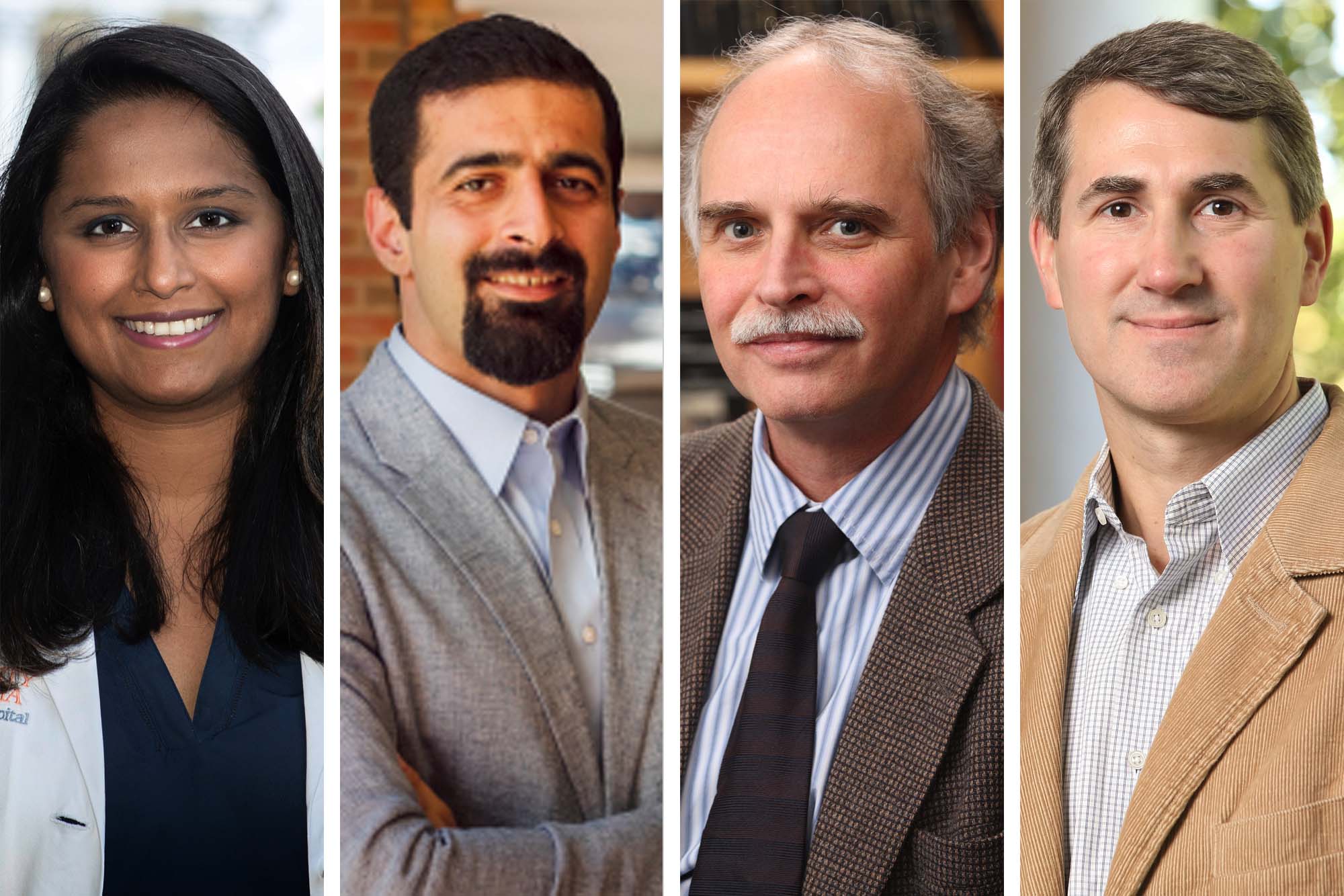
From left, Sana Syed, Heman Shakeri, Brent French and Michael Porter. (Shakeri contributed photo; French and Porter by Tom Cogill; Syed by Dan Addison, University Communications)
A Killed Whole-Cell Reduced Genome Bacterial SARS-CoV-2 Spike Protein Stalk Region Vaccine
Steven Zeichner, School of Medicine, Pediatrics
Patrick E. H. Jackson, School of Medicine, Infectious Diseases
Sanford Feldman, Director, Center for Comparative Medicine
The team plans to develop a COVID-19 vaccine using an inactive bacterial cell. Since these kind of vaccines are approved for production, are inexpensive and can be manufactured in existing facilities, the team expects that the work can be quickly translated into a safe, inexpensive, scalable and effective vaccine appropriate for global pandemic response.
Media Contact
Article Information
July 31, 2020
/content/ivy-foundation-backs-14-covid-translational-research-projects

